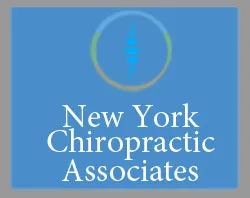- posted: Jul. 19, 2018
Chiropractic Tips for overcoming Premenstrual Syndrome (PMS)
Millions of women are affected each and every month from symptoms of PMS - premenstrual syndrome - and other related menstrual health issues. Unfortunately, many women believe it's normal to live with the pain, bloating, nausea, and headaches that can accompany PMS. The stress, discomfort, and inability to function comfortably do not have to be accepted as a natural part of life. There are several ways to treat these symptoms, one of which is through a preventative wellness based approach using Chiropractic care.
Spinal nerves affect all parts of the body, including those responsible for the menstrual cycle and menopause. Women who are affected by PMS may have subluxations or dysfunction in the nerves of the lower back or lumbar spine. The lumbar nerves support the uterus and ovaries and when those nerves are irritated, the pain and discomfort are felt in the female reproductive organs.
Doctors of chiropractic help maintain a healthy relationship between nerves and the female reproductive organs by opening the nerve supply from the spine. Chiropractors correct the vertebral subluxations that can lead to reduced function and symptoms of PMS. Some of the problems experienced during PMS and menopause can even be eliminated with regular visits to a chiropractor.
For years, women have been using over-the-counter medication to alleviate the symptoms and ease the pain endured during PMS and menopause. Receiving chiropractic spinal adjustments can decrease these symptoms using a healthy, natural, and holistic approach.
Here are a few helpful tips on how you can reduce the symptoms of PMS
• Research has proven that you can reduce up to almost half of all symptoms (including mood swings, depression, and menstrual cramps) of PMS by simply consuming 1200 mg of calcium daily.
• One of the best ways to reduce PMS is through regular exercise. Not only does exercise reduce, or sometimes eliminate premenstrual syndrome, it also is an excellent way to reduce stress and lower your risk of diseases including heart disease and cancer.
• Women who experience premenstrual breast tenderness can reduce or eliminate this symptom by taking 600 IU of Vitamin E daily.
• Dietary changes that may help reduce the symptoms of PMS include following a low-fat vegetarian diet, and/ or reducing your intake of refined sugar, salt, red meat, alcohol, and caffeine.
• Women who crave sugar during the days they experience premenstrual symptoms often find relief by supplementing their diet with 300 to 500 mg of magnesium. Magnesium also may help reduce breast tenderness.
• Alternative treatments that may be helpful include taking about 1500 mg of Primrose oil daily, or using natural progesterone cream (amount varies by product).
Remember, a healthy spine and nervous system are essential for the health of not only the female reproductive system, but for overall health and wellness. It is vital that women have routine spinal check-ups from a doctor of chiropractic
